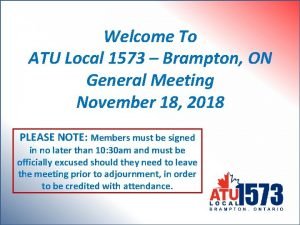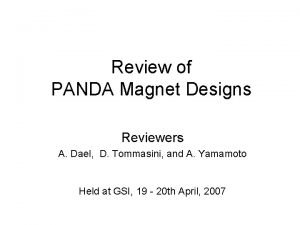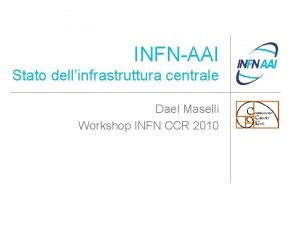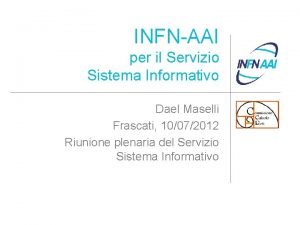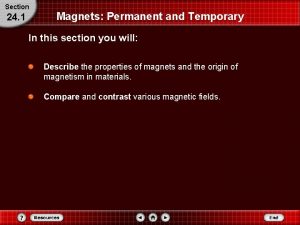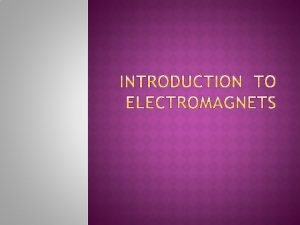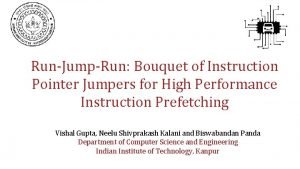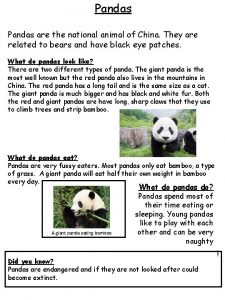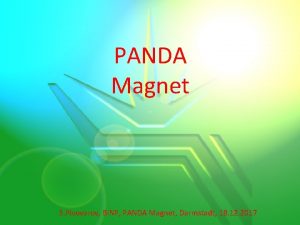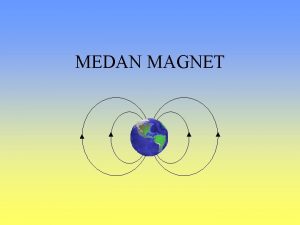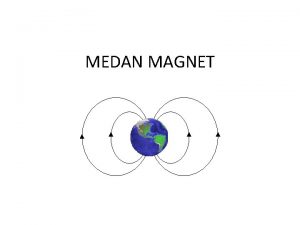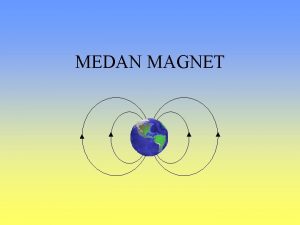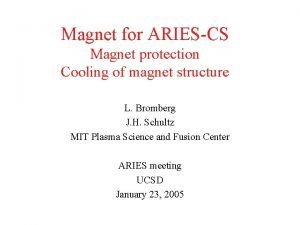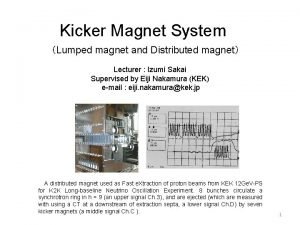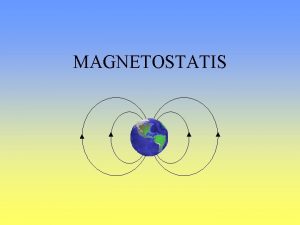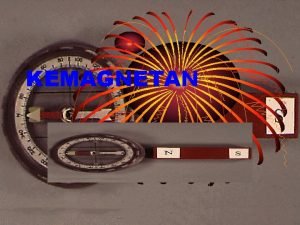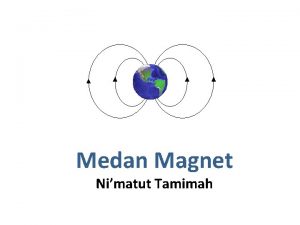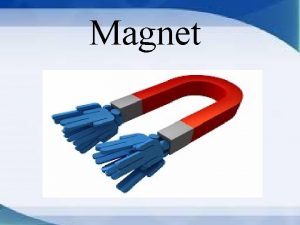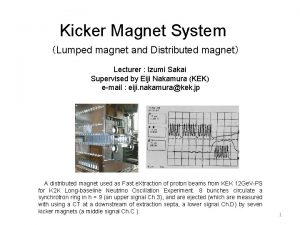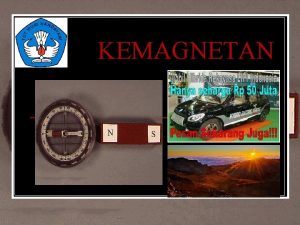Review of PANDA Magnet Designs Reviewers A Dael















- Slides: 15

Review of PANDA Magnet Designs Reviewers A. Dael, D. Tommasini, and A. Yamamoto Held at GSI, 19 - 20 th April, 2007

Acknowledgements • Reviewers would thank all presentors and the review organizers/secretaries for their hard work to prepare for the review and for their hospitalities. • We wish further successful cooperation to reach the PANDA magnet to be successfully completed.

Task given • Review of two designs – Pro. & Con. , and evaluation, • Advise a design adequate for PANDA – Can we find a best, unified design, and the reasons, • Suggest further work to be done – Further optimization, and – Necessary works in balance of other systems

Recommendations (1) • Superconductor: – Al-stabilized Nb. Ti-superconductor • Mechanical and electrical properties to be further optimized, • Coil-winding and support-shell configuration – Single or multi-layer winding • Operational current to be optimized in balance of quench protection and cryogenics operation, – Thin support shell adequate for less mechanicalstress consentration between coil and shell, – Energy/Cold-mass (E/M) ratio of 5 (~10) k. J/kg may be a convenient guide-line,

Recommendations (2) • Thermal insulation – Further studies suggested on • Radiation heat load to be minimized by pure-Al coated cold surface, • Conduction support • Current leads (conduction, gas-cooled), • Cooling – Indirect cooling with both 2 -phase force flow and thermo-syphon to be available,

Recommendation (3) • Cryogenics – He Refrigerator would be the primary option, • Efficient and flexible in various operational mode (precooling, powering, quench recovery, power failure recovery. . ) – Comment: • Cryo-cooler would be convenient, – if no additional operational effort required, and – If no Lhe systems available, » Pre-cooling system for safe cooling required, » Combination with Lhe reservoir would not be smart, » Extra, operational effort required, if the system design not well considered, » System not be so much redundant against emergency and/or failure modes

Recommendation (4) • Electromagnetic design with Iron Yoke – Smaller d. F-z is encouraged from the magnet design and safety view point, – Further optimization advised in balance of d. F-z, yoke-demensional constraint, and accessbility,

Recommendation (5) • Safety – Conductor • Load-line ratio of ~ 50 % adequate to keep a temperature margin of > 1. 5 K ( @ T-op = 5 K) – Coil • E/M ratio of 5 (= 10 k. J/lg) adequate for thermal stress free condition in case of quench, • Connections between split windings to be pursued – Cooling • Indirect cooling with pure-Al strips temperature equalization adequate, in stability and high pressure (Liquid gas) handling,

Recommendation (6) • Quench Protection – Energy extraction with PS switch-off, – Quench back from support shell, – Quench-propagation by using heater may be advised for redundant safety. – Current leads need to be redundant against quench (specially in case of HTS current leads) >> back-up leads required,

Recommendation (7) • High-pressure gas safety – High pressure design should be adaptable for He-refrigerator max. pressure (10 ~ 20 bars).

Summary of Comments • The magnet parameters are clearly in the range of state of the art Aluminum stabilised solenoids. • Also the indirect cooling has decisive advantages and is recommended. • So the basic options of existing solenoids for HEP are recommended. • The reasonable axial force equilibrium is better; • The magnetic configuration from DUBNA has better optimisation

COMMENTS on the budgetary offers: • The two offers are difficult to compare: – different questions have been asked to the companies by different people. If collaboration needs consolidated industrial budgetary estimations same global specifications and definition drawings with clear scope of supply must be sent from unique authority to several companies in the world and may include a technical questionnaire; • This phase needs also a first definition by the collaboration – of the responsibility limit of the companies and of the procurement scheme that will be used ( Is there any in kind contribution for subparts, Who is giving the orders , who is doing follow up…? )

Conclusion • Seeing the extensive design work still to be done, we strongly recommend to converge in one unified reference design with following concept, – Al-stab. Nb. Ti conductor, – Indirect cooling – Cryogenics system with Refrigerator • It is encouraged to seek further optimum yoke design to reduce axial difference force.

For Collaboration: • Clearly define: – – – interface with Cryogenics FAIR system Handling capacity ( Magnetic measurements Field time stability requirement and ramping time constraint acceptable total height of the magnet (thermo siphon case) Fixed specifications allowed the space available for the coil and YOKE with view of reasonable equilibrium of the forces • Define work packages to allow team working in synergy on a unified design. • We encourage a superferic dipole.

 Epsrc response to reviewers
Epsrc response to reviewers Dael jaecques
Dael jaecques A dael
A dael Infn godiva
Infn godiva Dael maselli
Dael maselli Organigrama atu
Organigrama atu Apakah magnet berasal dari kata magnesia
Apakah magnet berasal dari kata magnesia Difference between permanent magnet and temporary magnet
Difference between permanent magnet and temporary magnet Temporary vs permanent magnets
Temporary vs permanent magnets Traditional and systematic review venn diagram
Traditional and systematic review venn diagram Chapter review motion part a vocabulary review answer key
Chapter review motion part a vocabulary review answer key Narrative review vs systematic review
Narrative review vs systematic review Ap gov review final exam review
Ap gov review final exam review Nader amin-salehi
Nader amin-salehi The instruction jumpers2
The instruction jumpers2 China national animal
China national animal

